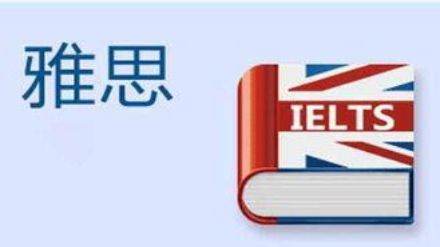| 考试日期: | 2013年1月5日 |
| Reading Passage 1 | |
| Title: | The impact of advertisement on children (MS) |
| Question types: | List of headings (7) Yes/No/Not Given(6) |
| 文章内容回顾 | 讲广告和小孩饮食的。电视广告对儿童饮食习惯以及营养概念的影响;一些小孩子吃垃圾食品并没有增加其对营养的知识;食品广告与儿童肥胖症之间的关系;进一步的研究;倡议我们应该有所行动。2010年3月27日旧题。 |
| 英文原文阅读 | 托福TPO中正好有一篇也是讲广告和孩子的,背景有点相似,各位考生和老师可以参考一下。 Children and Advertising Young children are trusting of commercial advertisements in the media, and advertisers have sometimes been accused of taking advantage of this trusting outlook. The Independent Television Commission, regulator of television advertising in the United Kingdom, has criticized advertisers for ‘misleadingness'—creating a wrong impression either intentionally or unintentionally—in an effort to control advertisers' use of techniques that make it difficult for children to judge the true size, action, performance, or construction of a toy. General concern about misleading tactics that advertisers employ is centered on the use of exaggeration. Consumer protection groups and parents believe that children are largely ill-equipped to recognize such techniques and that often exaggeration is used at the expense of product information. Claims such as "the best' or “better than" can be subjective and misleading; even adults may be unsure as to their meaning. They represent the advertiser's opinions about the qualities of their products or brand and, as a consequence, are difficult to verify. Advertisers sometimes offset or counterbalance an exaggerated claim with a disclaimer—a qualification or condition on the claim. For example, the claim that breakfast cereal has a health benefit may be accompanied by the disclaimer "when part of a nutritionally balanced breakfast.' However, research has shown that children often have difficulty understanding disclaimers: children may interpret the phrase 'when part of a nutritionally balanced breakfast" to mean that the cereal is required as a necessary part of a balanced breakfast. The author George Comstock suggested that less than a quarter of children between the ages of six and eight years old understood standard disclaimers used in many toy advertisements and that disclaimers are more readily comprehended when presented in both audio and visual formats. Nevertheless, disclaimers are mainly presented in audio format only. Fantasy is one of the more common techniques in advertising that could possibly mislead a young audience. Child-oriented advertisements are more likely to include magic and fantasy than advertisements aimed at adults. In a content analysis of Canadian television, the author Stephen Kline observed that nearly all commercials for character toys featured fantasy play. Children have strong imaginations and the use of fantasy brings their ideas to life, but children may not be adept enough to realize that what they are viewing is unreal. Fantasy situations and settings are frequently used to attract children's attention, particularly in food advertising. Advertisements for breakfast cereals have, for many years, been found to be especially fond of fantasy techniques, with almost nine out of ten including such content. Generally, there is uncertainty as to whether very young children can distinguish between fantasy and reality in advertising. Certainly, rational appeals in advertising aimed at children are limited, as most advertisements use emotional and indirect appeals to psychological states or associations. The use of celebrities such as singers and movie stars is common in advertising. The intention is for the positively perceived attributes of the celebrity to be transferred to the advertised product and for the two to become automatically linked in the audience's mind. In children's advertising, the celebrities are often animated figures from popular cartoons In the recent past, the role of celebrities in advertising to children has often been conflated with the concept of host selling. Host selling involves blending advertisements with regular programming in a way that makes it difficult to distinguish one from the other. Host selling occurs, for example, when a children's show about a cartoon lion contains an ad in which the same lion promotes a breakfast cereal. The psychologist Dale Kunkel showed that the practice of host selling reduced children's ability to distinguish between advertising and program material. It was also found that older children responded more positively to products in host selling advertisements. Regarding the appearance of celebrities in advertisements that do not involve host selling, the evidence is mixed. Researcher Charles Atkin found that children believe that the characters used to advertise breakfast cereals are knowledgeable about cereals, and children accept such characters as credible sources of nutritional information. This finding was even more marked for heavy viewers of television. In addition, children feel validated in their choice of a product when a celebrity endorses that product. A study of children in Hong Kong, however, found that the presence of celebrities in advertisements could negatively affect the children’s perceptions of a product if the children did not like the celebrity in question. |
| 题型难度分析 | 文章难度适中,背景也不新颖,关键是题型搭配非常直白,具体分析请看下面。 |
| 题型技巧分析 | 此文具体的题型编排非常简单,考生能在朗阁“精六六五 阅写补充练习”上找到多篇类似的文章,比如P264、P214。这些文章都是headings + 判断的搭配。此种搭配非常适合“平行阅读”。全文以判断题为解题重点,每读一段就解决里面的细节题,然后解决段落相应的headings。这样可以尽量读 一遍文章解决大部分题目。 |
| 剑桥雅思推荐原文练习 | 剑8 Test 1 Passage 2 剑7 Test 1 Passage 2 |
| Reading Passage 2 | |
| Title: | Coastal Sculpture |
| Question types: | 段落细节配对(5) 分类配对(5) 完成句子(3) |
| 文章内容回顾 | 首段:大致介绍海岸雕像的存在;Section B: 关于第一个雕像的竖立过程、问题、现状;Section C: 关于第二个雕像的竖立经历、细节、及其受欢迎的现状;Section D: 关于第三个教堂雕像,因为海水侵蚀消失了,而今重新雕刻,受到阻碍,有个人的劝解,改变了公众的看法,之后接受了雕像,如今雕像可以使得该地区重回当年的 繁荣时代。 |
| 题型难度分析 | 此文的文章叙述难度一般,就是题型中有“段落细节配对”这个人见人烦的题型,对考生的心理是个挑战。 |
| 题型技巧分析 | 此篇文章的重点和难点在于“段落细节配对”。做这个题型的题目绝对不能操之过急,甚至可以不把这个题型作为重点题型去处理。有些学生带着洒脱的心态来做这个题型,做对几个算几个。个人认为这种策略总比方寸大乱来得好。 |
| 剑桥雅思推荐原文练习 | 剑8 Test 1 Passage 1(题型编排比较相似) |
| Reading Passage 3 | |
| Title: | Talc |
| Question types: | Matching Summary 简答题 |
| 文章内容回顾 | 首部分讲滑石粉概述,后面是口香糖制作,橄榄油和农产品保护中橄榄油的用法;最后是讲滑石粉对农作物的意义,并在最后一段说,会在葡萄种植农身上首先试用。2010年3月6日旧题。 |
| 题型难度分析 | 此文难度适中,不偏。 |
| 题型技巧分析 | 这篇文章的题型编排又非常适合使用“平行阅读”。我们 可以把后面两个题型作为解题重点,而把matching作为附带的题型。在做题过程中以后两个题型的关键词为主进行阅读,哪里出现matching的关键 词再进行比较详细的阅读。类似matching这样的不按顺序出题的题型我们千万不能把它作为主攻对象,而应把注意力放在那些按顺序出的题目上,比如这篇 文章中的Summary和简答题。 |






